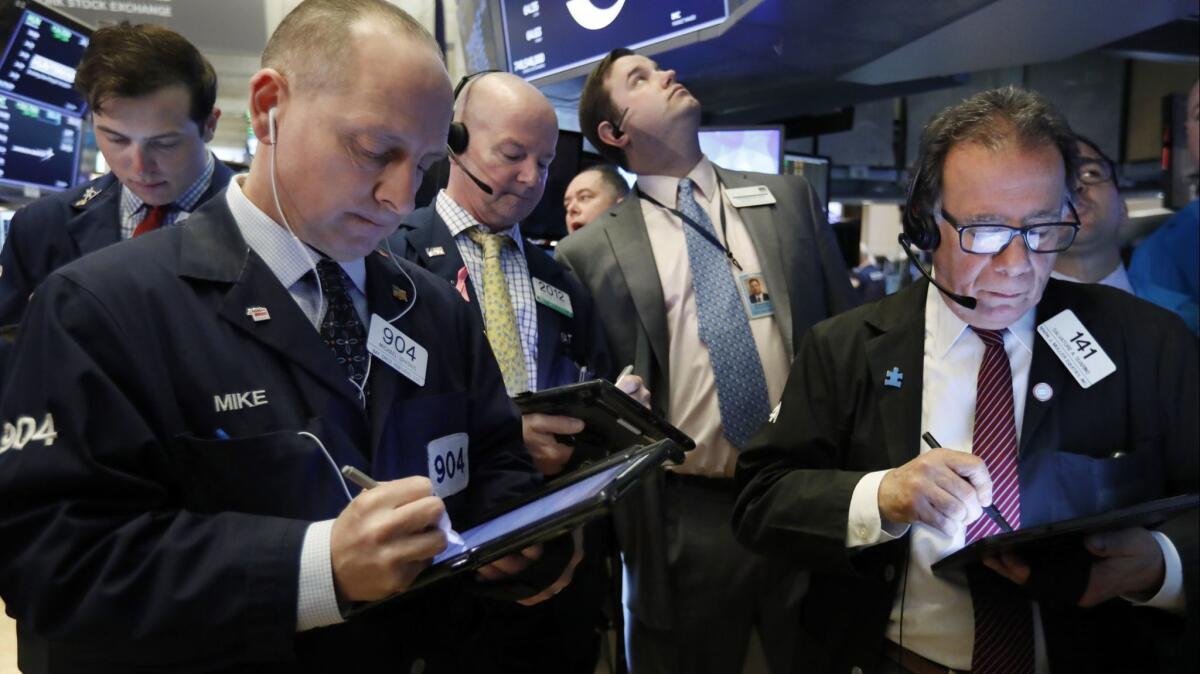Bond market sends recession signal for first time since financial crisis

- Share via
A closely watched financial metric turned negative Friday for the first time since the financial crisis more than a decade ago, underscoring concern about a possible economic slump and the prospect that the Federal Reserve will have to star cutting interest rates again.
The gap between the 3-month and 10-year Treasury yields — or returns for investors — vanished as a surge of buying of the longer-term bonds raised their prices and pushed their rates sharply lower.
Inversion is widely considered a reliable harbinger of a U.S. recession because investors typically require a premium to lock up their money for a longer time due to the inflation associated with a growing economy — unless they think that there could be an economic downturn. The 10-year slipped to as low as 2.439%.
U.S. central bank policymakers on Wednesday lowered their growth projections and their interest rate outlook, with the majority of officials now envisaging no rate hikes this year. That’s down from a median call of two at their December meeting.
“It looks like the global slowdown worries have been confirmed and the market is beginning to price in Fed easing, potential recession down the road,” said Kathy Jones, chief fixed-income strategist at Charles Schwab & Co. “It’s clearly a sign that the market is worried about growth and moving into Treasuries from riskier asset classes.”
The exodus from stocks sent the S&P 500 index down 1.5% as of about 10 a.m. PDT — on pace for possibly its biggest daily loss since Jan. 3. The Dow fell 360 points, or 1.4%, to 25,602. The Nasdaq composite fell 2%.
The 3-month to 10-year curve is widely favored as an indicator that the economy is within a couple of years of recession. But Friday’s move is an extension of the inversion at the front end of the curve that happened in December. The gap between the 2-year and 10-year yields has also narrowed, to around 10 basis points.
That yield has fallen as much as 17 basis points from the close on Tuesday, the day before the Fed decision. Weaker-than-expected European factory data that helped drive benchmark German yields back below zero on Friday also supported the move.
More to Read
Inside the business of entertainment
The Wide Shot brings you news, analysis and insights on everything from streaming wars to production — and what it all means for the future.
You may occasionally receive promotional content from the Los Angeles Times.










